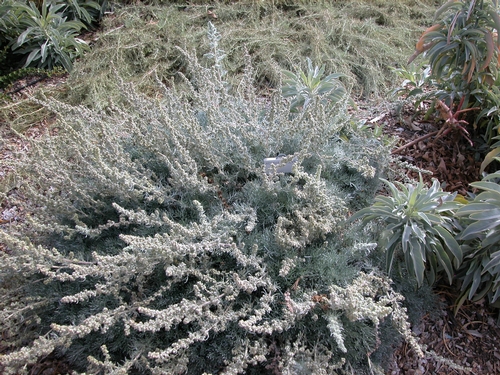- Posted By: Amy Breschini
- Written by: Ann Dozier
Thinking of doing a little re-landscaping this fall?
Wishing your landscaping could thrive with less work and water?
The Master Gardener Advice to Grow By presentation this Saturday will give ideas for low-maintenance landscaping through use of native California plants.
Fall is the time to plant California native perennials, shrubs and trees. It is the time of the year when the soil is still warm and winter rains are just around the corner. The winter is a prime time for the roots of newly planted shrubs and trees to become established, which will help them survive on little supplemental water during the first summer and if we are lucky, perhaps no additional water in the years that follow. Remember, most California native plants prefer our Mediterranean climate, with distinguishable hot dry summers followed by wet winters.
The days when “native plant garden” meant a dull, gray, dry looking landscape are over.
Today’s wide choice of native plants can provide greenery and varied colors of flowers – plus giving benefits of adaptation to the local climate, low to moderate water usage and resistance to pests, provide nectar to native insects and habitat to wildlife. Many natives are ignored by deer, or if they are nibbled, can shrug off the damage.
Two examples of easy-going natives are manzanita and ceanothus (California lilac) – either of these plants is available in varieties ranging from ground-cover to small tree when mature; both are lush green and attractive in many settings. Colorful perennial flowers such as penstemon and coral bells will also be discussed.
In addition, Saturday's presentation will also include a talk about Monarch butterflies and the importance of milkweed for their survival. The guest speakers are a group of volunteers through the Central Coast Natural History Museum that help raise funds to support the state park locations and volunteer as docents.
Come visit the Garden of the Seven Sisters, Saturday, October 15 from 10 until noon to learn about sustainable gardening with native plants. Dress for variable weather – hats, sunscreen and sweaters -- and bring a chair if possible..
There are many useful websites to find out more about California Natives and specifically for our region. Las Pilitas Nursery has broken down their California native plant list by plant communities and by zip code. Las Pilitas sells their plants to the public on Saturdays. There are several local wholesale nurseries that are sold at all of the independent nurseries in our area. They offer the same information on their websites that you may find on the plant label: Native Son's Nursery, Annie's Annuals, Manzanita Nursery (Retail Nursery), San Marcos Growers, Monterey Bay Nursery and Growing Grounds Farm and Yerba Buena Nursery (Retail Nursery). You may also find helpful information through the UC Davis Arboretum, California Native Plant Society, San Luis Obispo Botanical Garden and Cal Poly Leaning Tree Arboretum and The Theodore Payne Foundation.
There are some excellent books on the topic of California Native Plants: Oaks in the Urban Landscape by Larry Costello and co-authors Bruce Hagen and Katherine Jones. Living Among the Oaks by Doug McCreary is available as a free download. We also offer an information package about oaks. Carol Bornstein, David Fross and Bart O'Brien have co-authored: California Native Plants for the Garden and Reimagining the California Lawn.




